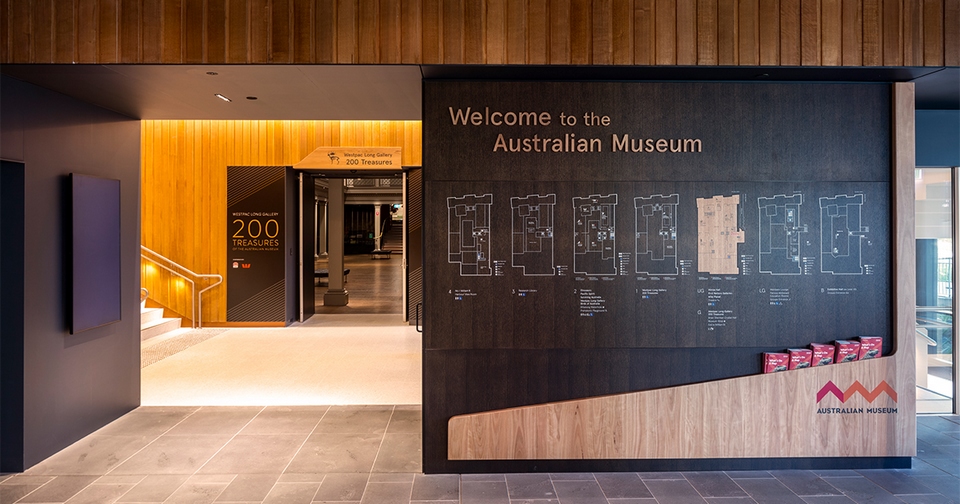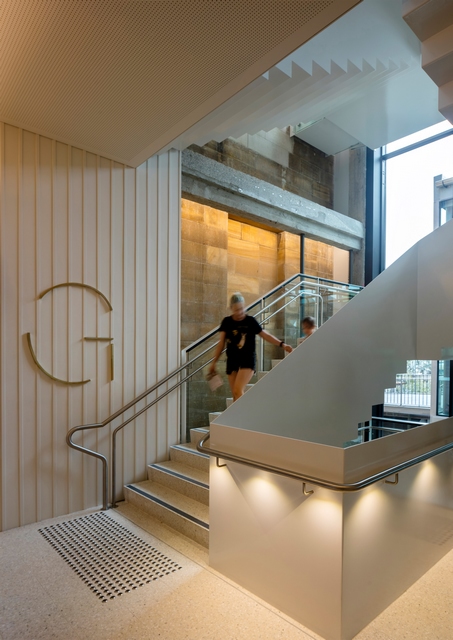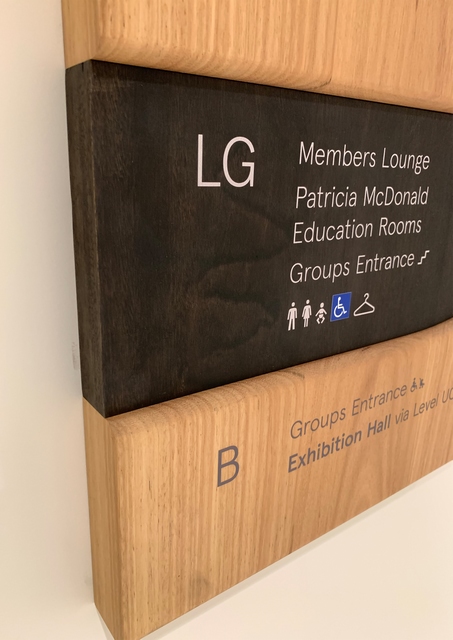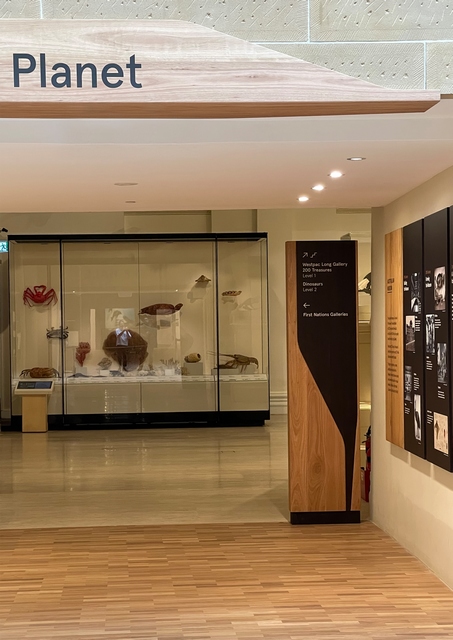Australian Museum Wayfinding Program | Entro | World Design Awards 2021
Entro: Winner of World Design Awards 2021. Designed for the Australian Museum, Entro’s visitor journey program bridges the Museum’s heritage architecture with its contemporary addition. Featuring plantation-sourced Blackbutt timber to evoke First Nations influences; repurposed balustrades from the heritage reclamation to create bespoke signage, and best-in-class accessibility features, the whole ensures a memorable, emotional experience for all.
Design Challenge
Our brief for the wayfinding and signage program for the renewed Australian Museum was to create a world-class visitor journey – a memorable and emotional experience that: connects visitors to this place and all that it stands for; integrates First Nations principles; and bridges the Museum’s heritage architecture with the new contemporary addition. The priority was to create a wayfinding experience that is “Welcoming, Clear, Respectful, Unique, and Accessible to All.” All concepts were referenced back to this statement to ensure that we were in alignment with our shared vision.
Design Solution
Prioritizing a highly collaborative process with stakeholders, Entro designed a wayfinding strategy that embodies the museum, incorporating native Australian materials that complement the Museum’s heritage architectural features. Plantation-sourced Blackbutt timber was used in positive and negative forms, evoking the natural world and First Nations influences respectfully. The Museum’s vision for a fully accessible visitor experience that accommodates first-time users inspired us to develop unexpected new sign types, bespoke pictograms, and a user-friendly wayfinding program. Instead of relying on technology to translate written messages to braille, we worked with an unsighted person who edited our braille directional messages to ensure they were relevant to users.
Design Inspiration: Insights from the Museum team, especially the First Nations staff members, led to an understanding of the sensitivity to the land on which the Museum sits. In particular, scarred trees, that provide wood or bark for the creation of cultural objects, were an influence as they have played a part in sharing knowledge and living in balance for millennia on the lands now known as Australia. All wayfinding signage is created with a duality of positive and negative shapes, representing what humans take from nature and what is left behind. This duality is carried through the entire sign program.
Heritage Reclamation: In collaboration with the architects, we repurposed solid bronze balustrades salvaged from the demolition of the original grand stairs of the Museum’s 1960s Parkes Farmer Building and turned them into sculptural stair numbers for the new main stairs. The limited length of the solid brass resulted in a unique typographic treatment for the numerals.
Impact
Australian Museum Director and CEO Kim McKay AO said Entro has made a lasting contribution to the Australian Museum. “The Australian Museum’s elegant new wayfinding not only helps visitors navigate the Museum’s old and new spaces, but it also incorporates native Australian materials that complement the Museum’s heritage architectural features. Aside from seeing the gorgeous end result, my favorite part of working with Entro was mapping out the visitor journey and determining the best signage program to create a seamless experience for all visitors when enjoying the transformed Australian Museum.”
Project Details
Firm
Entro
Project Name
Australian Museum Wayfinding Program
Architect/Designer
Jan Ashdown
World Design Awards Category
Cultural Built
Project Location
Sydney
Team
Jan Ashdown, Edmund Li, Amanda Morrison, Vanessa Tarasio
Country
Australia
Photography ©Credit
©Brett Boardman
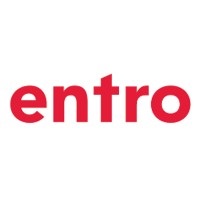 Entro
Entro
With a legacy dating back 50 years and a team of over 55 in offices in Toronto, Calgary, New York, Sydney and Zürich, Entro is a world leader in the field of environmental design.
Entro uses design to connect people to place; we call on design to fuel a dialogue between users and the spaces they inhabit – from hospitals and transit hubs to museums, arts facilities, corporate and educational campuses, and throughout cities. Our work gives places identity and meaning; it makes complex places navigable; it reveals the history behind new places.
Our interdisciplinary team brings together expertise in fields spanning art to neuroscience. We offer design services in branding, wayfinding, signage, environmental graphics, and exhibit design.


